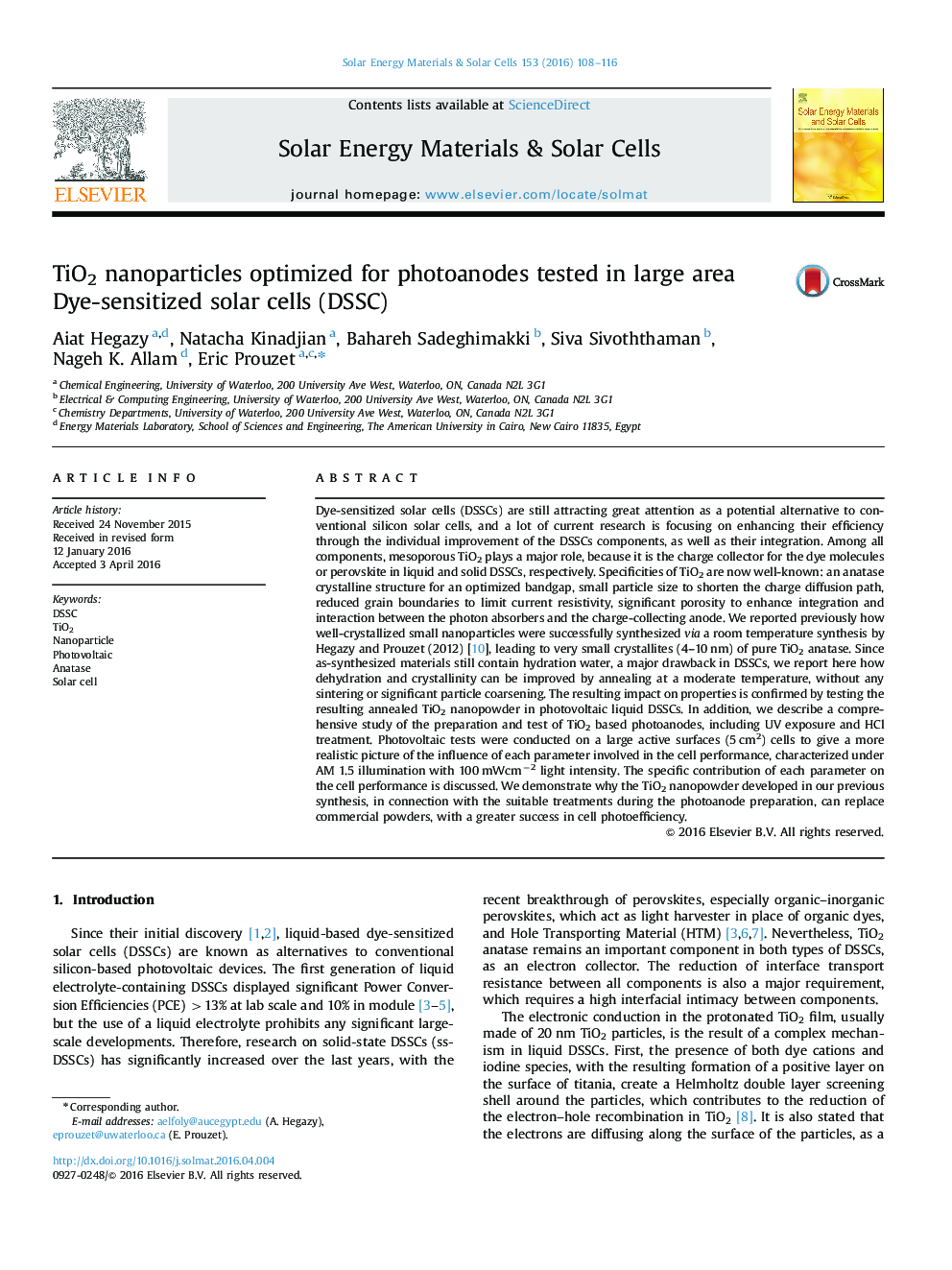| Article ID | Journal | Published Year | Pages | File Type |
|---|---|---|---|---|
| 6534697 | Solar Energy Materials and Solar Cells | 2016 | 9 Pages |
Abstract
Dye-sensitized solar cells (DSSCs) are still attracting great attention as a potential alternative to conventional silicon solar cells, and a lot of current research is focusing on enhancing their efficiency through the individual improvement of the DSSCs components, as well as their integration. Among all components, mesoporous TiO2 plays a major role, because it is the charge collector for the dye molecules or perovskite in liquid and solid DSSCs, respectively. Specificities of TiO2 are now well-known: an anatase crystalline structure for an optimized bandgap, small particle size to shorten the charge diffusion path, reduced grain boundaries to limit current resistivity, significant porosity to enhance integration and interaction between the photon absorbers and the charge-collecting anode. We reported previously how well-crystallized small nanoparticles were successfully synthesized via a room temperature synthesis by Hegazy and Prouzet (2012) [10], leading to very small crystallites (4-10Â nm) of pure TiO2 anatase. Since as-synthesized materials still contain hydration water, a major drawback in DSSCs, we report here how dehydration and crystallinity can be improved by annealing at a moderate temperature, without any sintering or significant particle coarsening. The resulting impact on properties is confirmed by testing the resulting annealed TiO2 nanopowder in photovoltaic liquid DSSCs. In addition, we describe a comprehensive study of the preparation and test of TiO2 based photoanodes, including UV exposure and HCl treatment. Photovoltaic tests were conducted on a large active surfaces (5Â cm2) cells to give a more realistic picture of the influence of each parameter involved in the cell performance, characterized under AM 1.5 illumination with 100Â mWcmâ2 light intensity. The specific contribution of each parameter on the cell performance is discussed. We demonstrate why the TiO2 nanopowder developed in our previous synthesis, in connection with the suitable treatments during the photoanode preparation, can replace commercial powders, with a greater success in cell photoefficiency.
Related Topics
Physical Sciences and Engineering
Chemical Engineering
Catalysis
Authors
Aiat Hegazy, Natacha Kinadjian, Bahareh Sadeghimakki, Siva Sivoththaman, Nageh K. Allam, Eric Prouzet,
